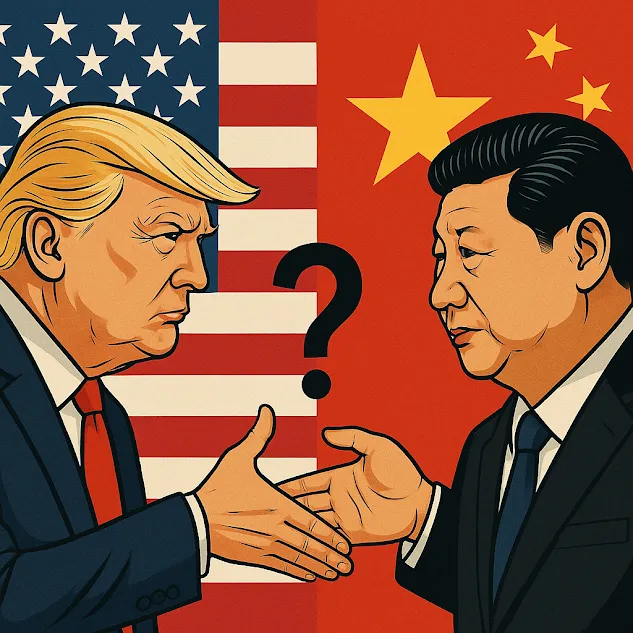Explore the global impact of Trump’s tariff regime, the US-China trade war summary, and rising economic nationalism in this comprehensive analysis by Desiche Konseltants.
The Lingering Shockwaves of Trump’s Tariff Regime Global Analysis:
When Donald Trump kicked off his “America First” agenda, no policy made waves quite like his bold use of tariffs. Meant to defend U.S. manufacturing and strike back at trade imbalances, the strategy sparked a domino effect that still shakes the global economy today. Even under President Biden, many of these policies remain, proving that the ripples from that trade war go far beyond economics—they’ve reshaped alliances, strained supply chains, and deepened political divides.
How It All Started: The US-China Trade War
Back in 2018, the Trump administration introduced sweeping tariffs under Section 301 of the Trade Act of 1974, with China as the main target. The reasons? Allegations of unfair trade practices, intellectual property theft, and a staggering trade imbalance. It started with steel and aluminum (under Section 232, citing national security) and quickly spread to billions of dollars’ worth of goods.
China hit back, and a full-blown trade war was on. What was supposed to help American businesses turned into a global headache.
Economic Fallout: The Real Cost of Tariffs
Quick Wins, Long-Term Headaches
Yes, U.S. steel and aluminum industries got a short-term boost. But according to economists from the Federal Reserve, Princeton, and Columbia, American consumers and businesses ended up footing the bill. Higher prices became the new normal.
Sectors like agriculture, tech, and automotive were especially hard hit. U.S. farmers suffered badly when China imposed retaliatory tariffs on soybeans and pork, forcing Washington to approve billions in bailouts.
Supply Chain Chaos
Companies that relied on Chinese manufacturing had to scramble. Many shifted operations to Vietnam, Mexico, or other countries—but it wasn’t cheap, and the disruption was massive.
Inflation and Uncertainty
Tariffs added fuel to the inflation fire. Companies started delaying investments and stockpiling goods. By 2019, the IMF warned that the trade war could shave nearly 1% off global GDP. Then COVID-19 hit, making things even worse.
Political Ripples: Strained Ties and New Playbooks
U.S. and China: From Trade Partners to Rivals
While Biden dialed down the rhetoric, the overall tough stance on China has stuck. The tariffs played a key role in transforming economic rivalry into a full-blown strategic standoff.
Allies Turned Skeptics
Trump’s tariffs weren’t just aimed at China. Canada, the EU, and Japan also found themselves in the crosshairs. These moved soured relationships and led to retaliation—iconic American products like bourbon and Harley-Davidsons were caught in the crossfire.
Tariffs as Foreign Policy Tools
One big legacy? Tariffs are now seen as a legitimate tool of diplomacy. The logic is simple: if access to the U.S. market is a carrot, tariffs are the stick. That thinking continues to influence new policies, like tech export controls.
Social Shifts: Populism and Protectionism on the Rise
Manufacturing Dreams vs. Harsh Realities
Trump promised a return to America’s manufacturing heyday. That never fully materialized. Automation remained the main job killer. Still, the political message of “standing up for American workers” found an eager audience.
Populism Goes Global
The wave didn’t stop at the U.S. Borders. Countries like India, Brazil, and many in Europe embraced their own versions of economic nationalism. Tariffs became less about trade and more about identity and sovereignty.
Lessons from History: A Modern-Day Smoot-Hawley?
Economists have compared Trump’s tariffs to the infamous Smoot-Hawley Tariff Act of 1930, which deepened the Great Depression. The difference? Trumps were more targeted and rolled out over time. But the unpredictability and constant policy flip-flops left businesses in the lurch.
What Experts Think
The Economists
Most economists are not fans. A 2020 survey by the University of Chicago showed broad agreement: the tariffs hurt more than they helped. Think Tanks like the Peterson Institute have consistently argued they reduce efficiency and do not deliver promised benefits.
The Politicians
Politics, however, tells a different story. Few leaders want to be seen as “soft on China.” As a result, the tariff regime remains intact, with bipartisan support.
The Corporations
Meanwhile, companies are adapting. The “China + 1” strategy is now standard. Businesses keep a footprint in China but invest in other countries too, making supply chains more diverse—and potentially more resilient.
Looking Ahead: What Might Happen Next?
- Things Get Worse
If tensions over Taiwan, tech, or the South China Sea flare up, we might see a new round of tariffs and countermeasures. This could lead to a more divided world, with economic blocs forming around the U.S. and BRICS nations.
- Strategic Reset
A more hopeful outcome would involve smart renegotiations of trade deals, focusing on shared priorities like climate, tech, and labor standards.
- Living with the Chaos
Most likely? The status quo: tariffs stay, get tweaked here and there, and companies learn to live with uncertainty. Global trade becomes more regional than global.
Final Thoughts: The Tariff Regime’s Long Shadow
Trump’s tariff regime was not just another policy, it was a break from the global economic consensus that had defined decades. It showed that globalization is not inevitable and that countries are willing to hit pause and re-evaluate.
For policymakers and businesses alike, the new trade landscape is one where resilience matters as much as efficiency. At Desiche Konseltants, we believe that the world now faces a tough balancing act: openness vs. security, growth vs. fairness, globalism vs. nationalism.
The decisions made today will shape trade for a generation.
Author: Desiche Konseltants | www.desiche.net

